It was a week of changeable weather, with dull, grey and chilly days intermixed with periods of bright blue skies and blazing sunshine. Birders in both coastal and inland areas were treated to good showings of both Garganey and Wood Sandpiper, alongside a decent arrival of Temminck's Stints. This last species was recorded at 16 sites, primarily in eastern areas of England and Scotland, including threes at Minsmere RSPB, Suffolk, and Gibraltar Point, Lincolnshire. Three at Ripley Farm Reservoir, meanwhile, is the largest group reported in Hampshire since the BirdGuides sightings service began in 2000.
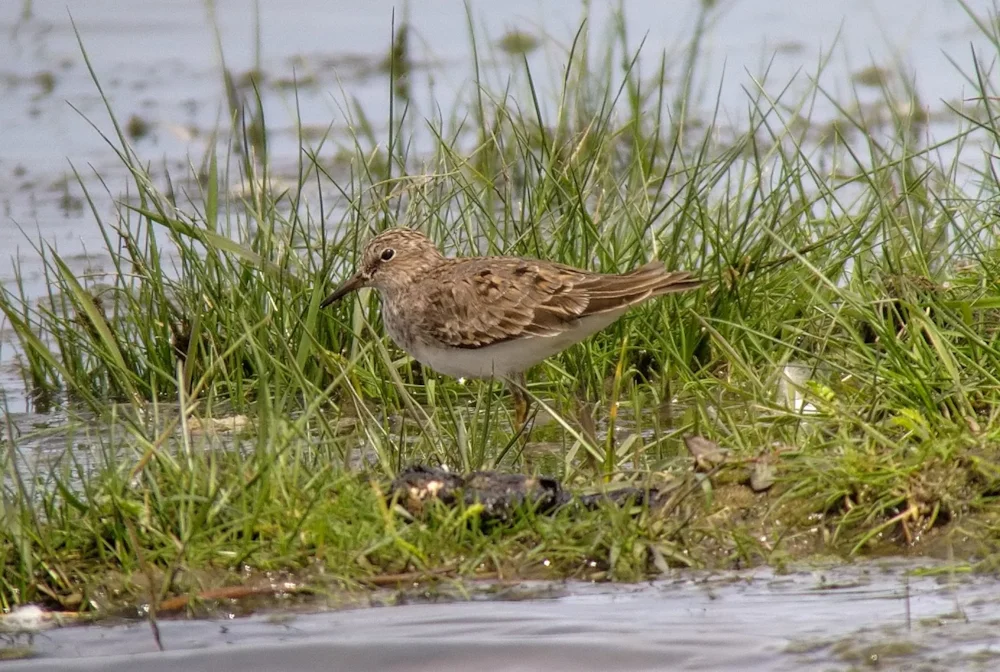
Temminck's Stint, Saltholme RSPB, Cleveland (Matthew Scarborough).
We cast our eyes to the Isle of Wight for this week's headline bird, with an adult Yellow-billed Kite at Lynn Tip from 10th. This, the Afrotropic counterpart to Black Kite, at first glance seems a highly improbable vagrant to British shores. However, a curious pattern of records has begun to emerge across Europe in recent years. One in The Netherlands, Germany and Denmark in April 2021 was followed by birds in both Estonia and Serbia in April 2022. Photos also emerged this week of one at Springfield Farm Quarry, Buckinghamshire, on 29 April 2019. Where are they coming from?
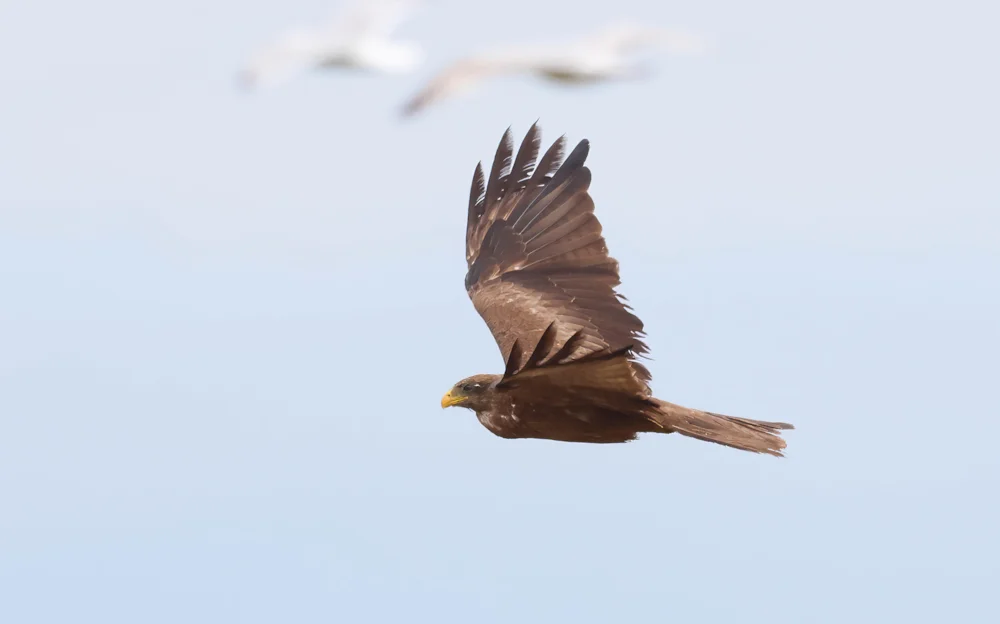
Yellow-billed Kite, Lynn Tip, Isle of Wight (Ashley Howe).
Although the species is largely resident in its native Africa, it is prone to long-distance vagrancy on occasion – amazingly, one reached Cayenne, French Guiana, on 3 May, becoming the first for the Americas. That said, you would have to presume that one reaching Britain would be the longest of all long shots, and the prevalence of the species in captivity – both in Britain and elsewhere in Europe – is always going to cast a huge shadow on doubt of an out-of-range bird. Perhaps not one to ink into the notebook just yet!
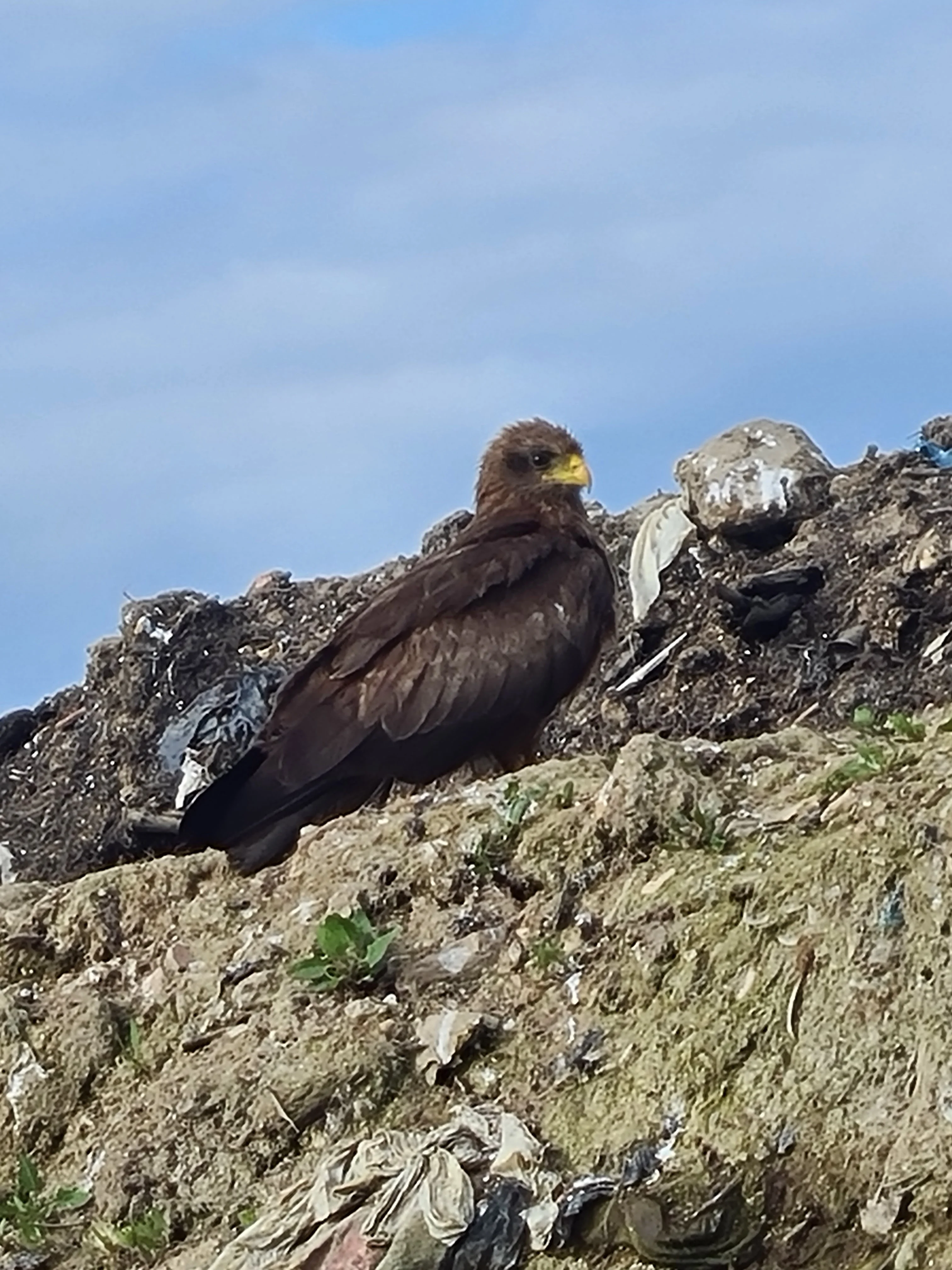
Yellow-billed Kite, Lynn Tip, Isle of Wight (Dee Salter).
A Song Sparrow on Bardsey Island, Gwynedd, on 9th had twitchers springing into action. A brilliant co-ordinated effort from observatory staff and local boatmen allowed approximately 30 birders to reach the island that afternoon, where the bird remained – albeit mobile – into the evening. Impressively for a species with just 10 (or 11) previous British records – and five of those from Fair Isle – this is Bardsey's second. The first – Britain's third at the time – resided on the island from 5-8 May 1970. Unfortunately, this latest individual bucked the trend of extended stays and proved a one-day bird, having performed an overnight disappearing act.
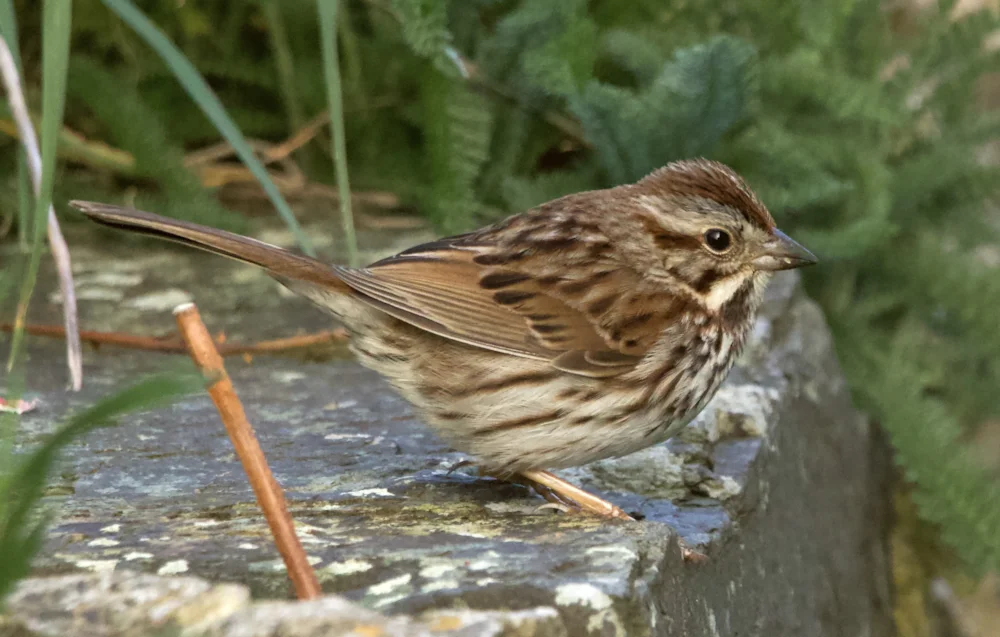
Song Sparrow, Bardsey Island, Gwynedd (Morgan Caygill).
The very same morning, a Dark-eyed Junco was discovered at Rattray Head, Aberdeenshire. Remaining reliable on its adopted seed pile until 11th, Scotland's last widely twitchable individual came as long ago as the turn of the century, making this one very popular indeed. It represents the first for the Aberdeenshire mainland, with previous records concerning birds on the Maersk Curlew offshore oil platform in May 2000 and May 2005. Both of these species are prone to crossing the Atlantic by ship – a trait emphasised by a record of singles of each onboard Federal Severn between Canada and Norway off Orkney at the end of April. News later emerged of another junco at High Kelling, Norfolk, on 6th.
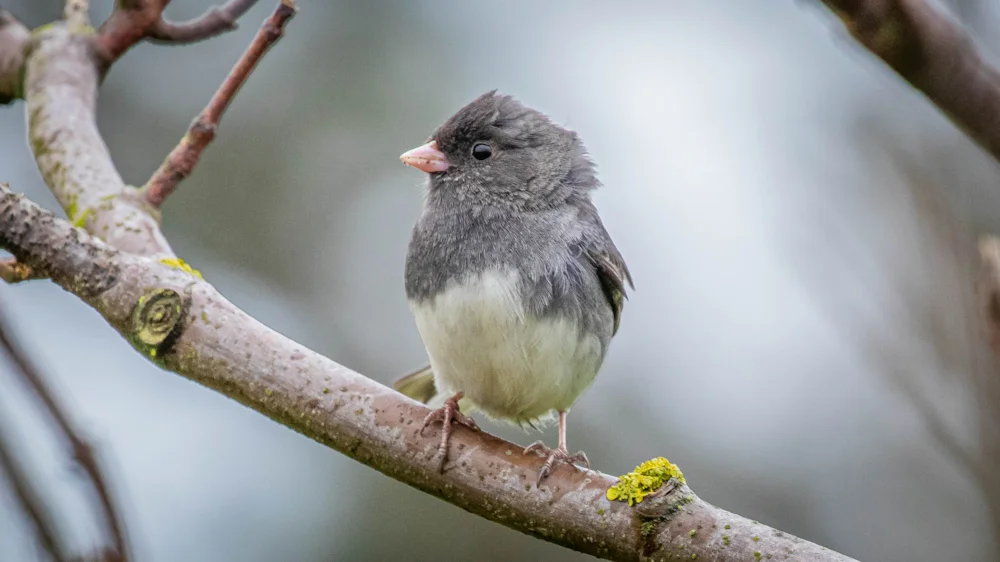
Dark-eyed Junco, Rattray Head, Aberdeenshire (Keith Yates).
Just down the road, one of the week's stranger finds concerned a drake Baikal Teal cavorting with Mallards on a disused coastal lido at Macduff, Aberdeenshire, for a short period on 10th. Unringed and fully winged, its somewhat strange location and chosen carrier species might yet prove a barrier when it comes to acceptance. If it does meet the bar, it would become just a second for Scotland after one on Fair Isle in autumn 2021.
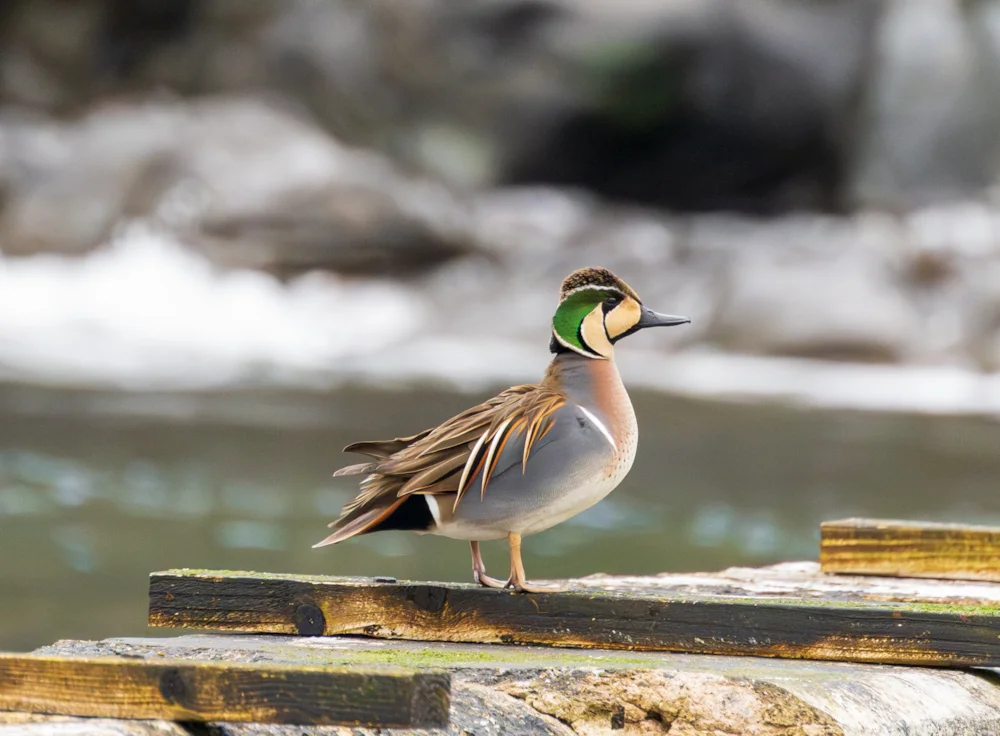
Baikal Teal, Macduff, Aberdeenshire (Richard Mullen).
Subalpine warblers are a spring highlight for many, although recent splitting has added an added layer of complexity to these tricky Currucas. Remarkably, this week saw each of the three species represented in Britain, with a male Moltoni's Warbler trapped and ringed at Portland, Dorset, on 12th the most notable in terms of number of records. The other two were in Mainland Shetland – an Eastern Subalpine at Clickimin Loch and a Western Subalpine at Quendale. A male at Sandhaven, Aberdeenshire could not be identified conclusively from the images taken, while a probable Eastern proved very elusive at Prawle, Devon.
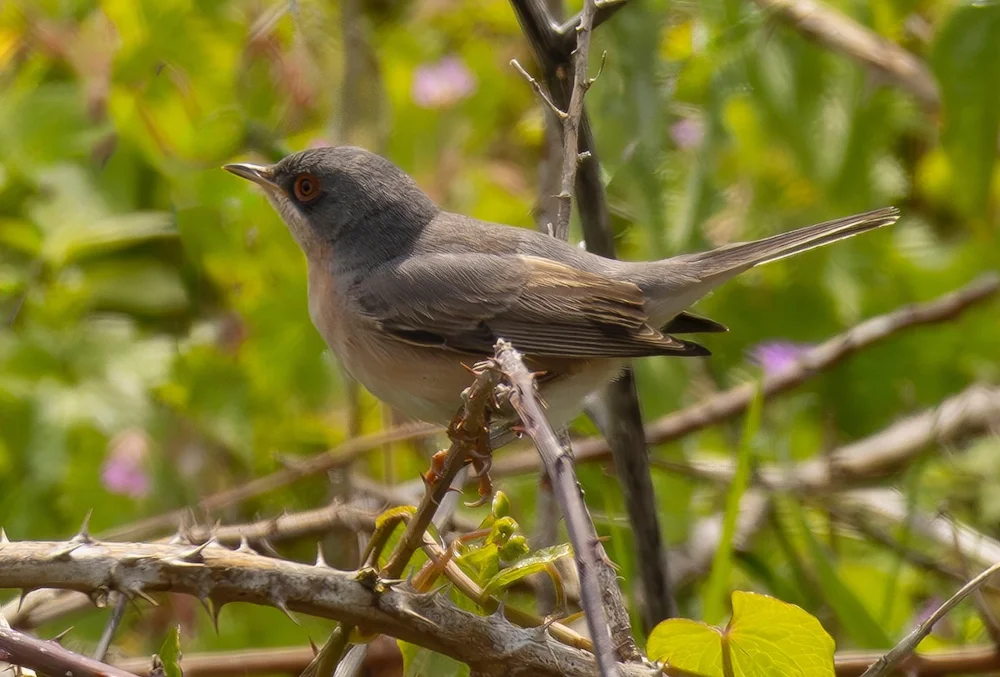
Moltoni's Warbler, Portland, Dorset (Peter Coe).
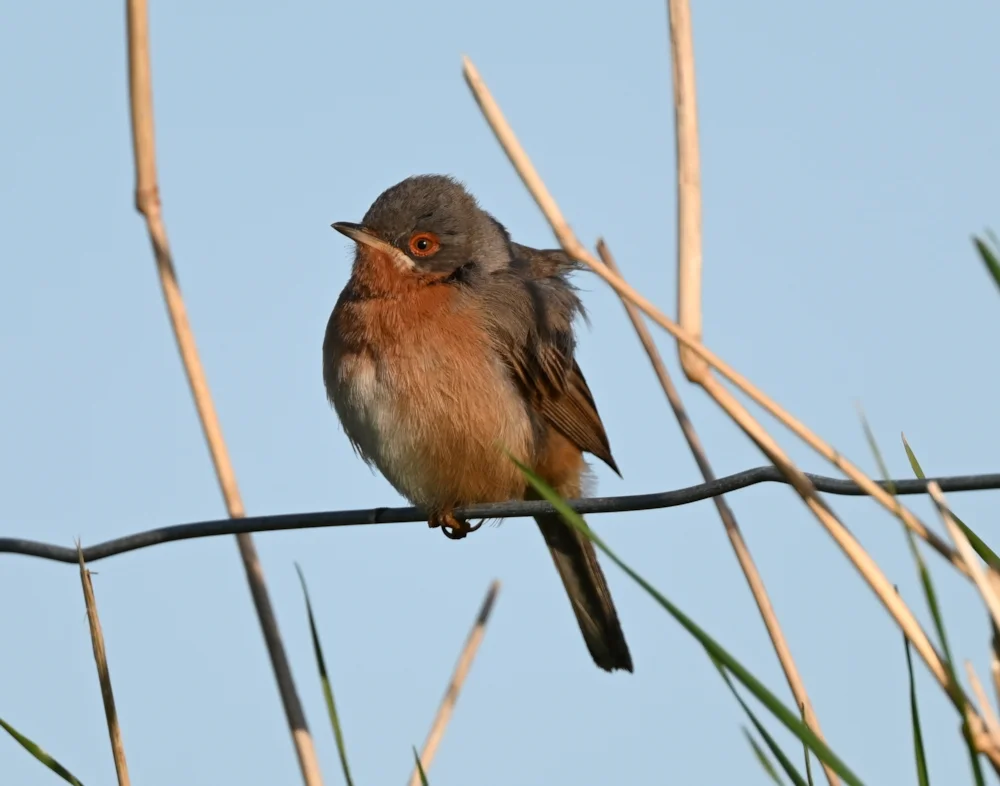
Western Subalpine Warbler, Quendale, Mainland, Shetland (Roger Ridley).
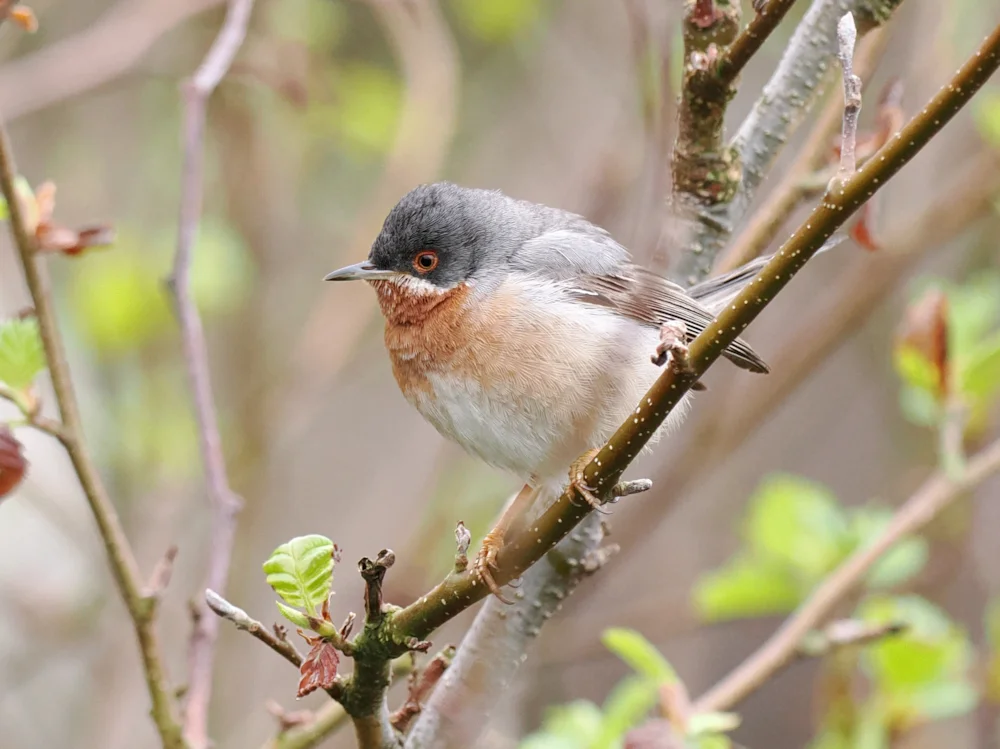
Eastern Subalpine Warbler, Lerwick, Mainland, Shetland (Andy Johnson).
An arrival of Great Reed Warblers in East Anglia saw no fewer than four found, with males belting out their croaky tones at Boyton Marshes RSPB, Suffolk, and Titchwell RSPB, Cantley Marshes RSPB and Pensthorpe Waterfowl Park (all Norfolk). A fifth remained in Somerset, while the first Blyth's Reed Warbler of 2023 was on Westray, Orkney, on 13th. Gloucestershire's first Iberian Chiffchaff was an excellent find at Staple-edge Wood, Gloucestershire, on 14th, with another hanging on in East Sussex.
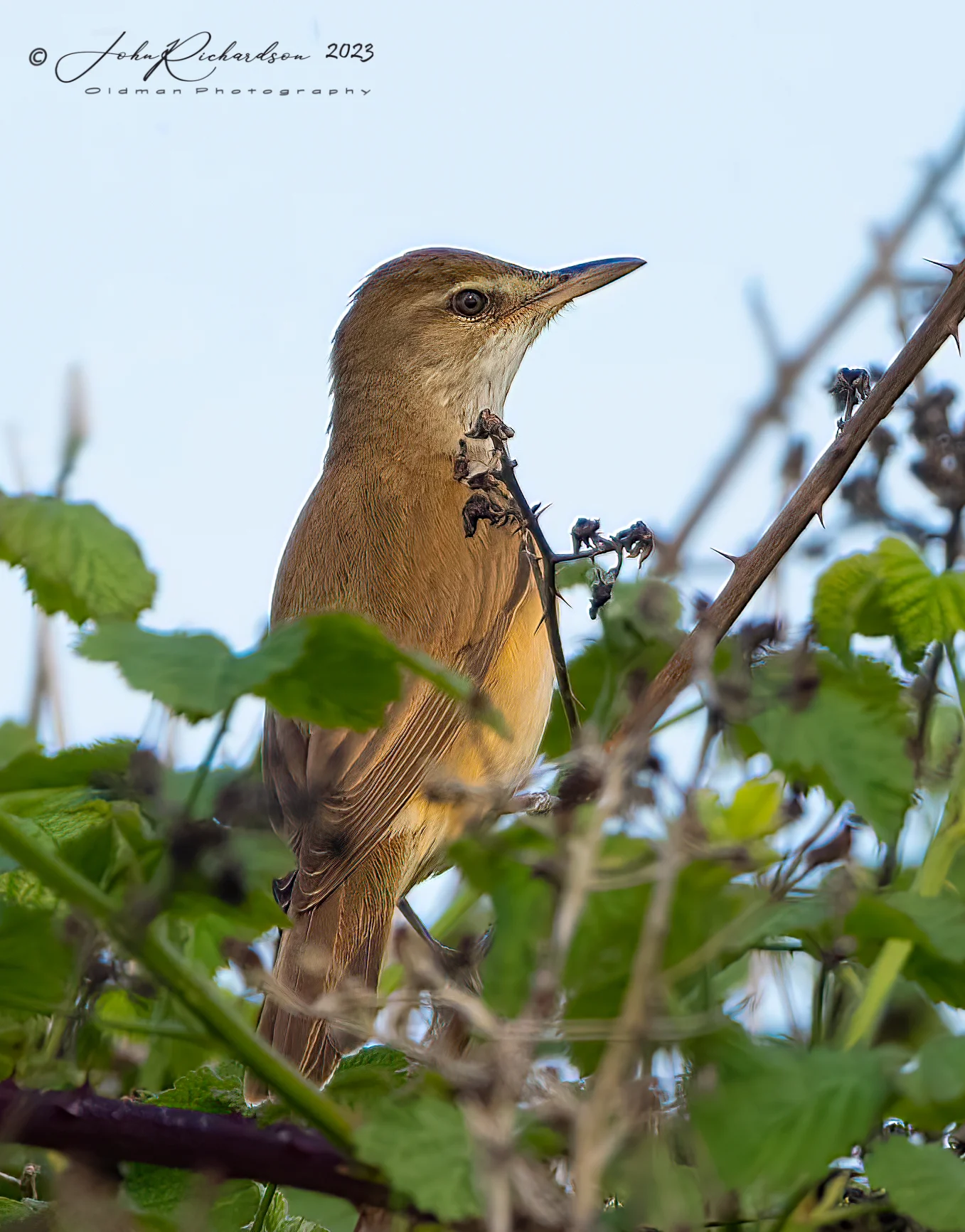
Great Reed Warbler, Boyton Marshes RSPB, Suffolk (John Richardson).
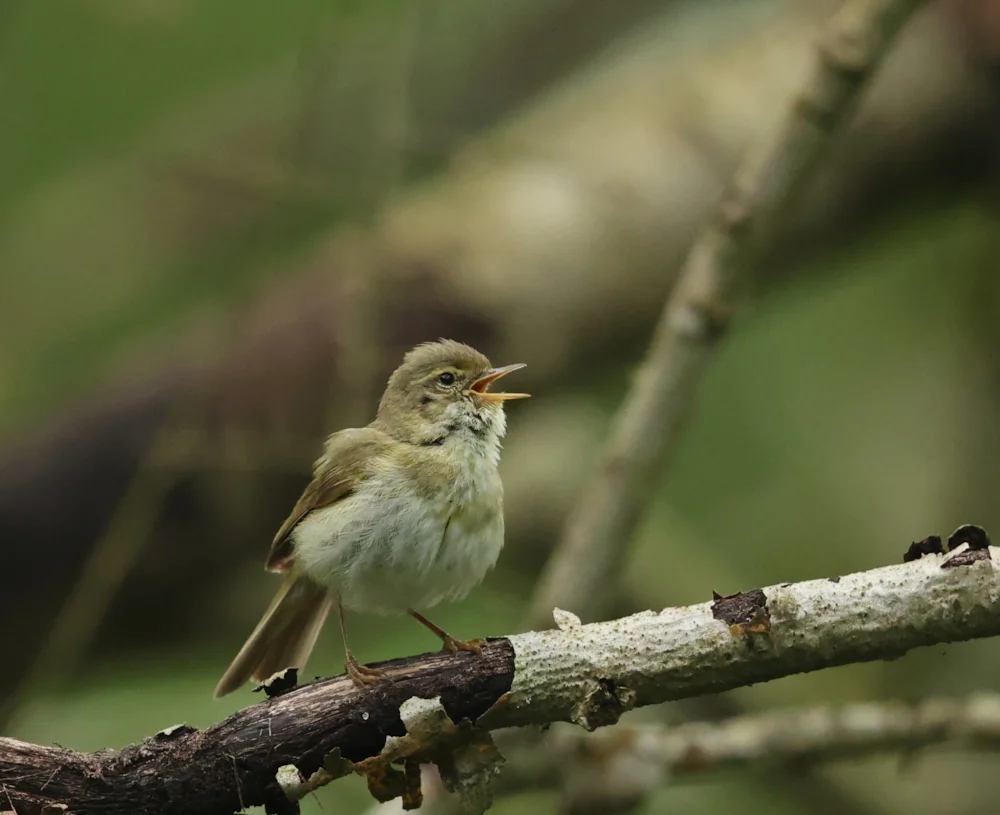
Iberian Chiffchaff, Abbot's Wood, East Sussex (Mark Leitch).
Four Red-backed Shrikes were on the English east coast, with further birds in Cornwall and Shetland (two). Elsewhere, Golden Orioles were in five counties, Hoopoes visited 18 sites and a young male Common Rosefinch sang near Hornsea, East Yorkshire. Four Wrynecks were logged – birds in Scilly, Cheshire, East Yorkshire and Lothian – although all proved brief. European Bee-eaters overflew Spurn, East Yorkshire, Bull Point, Devon, and Southwold, Suffolk.
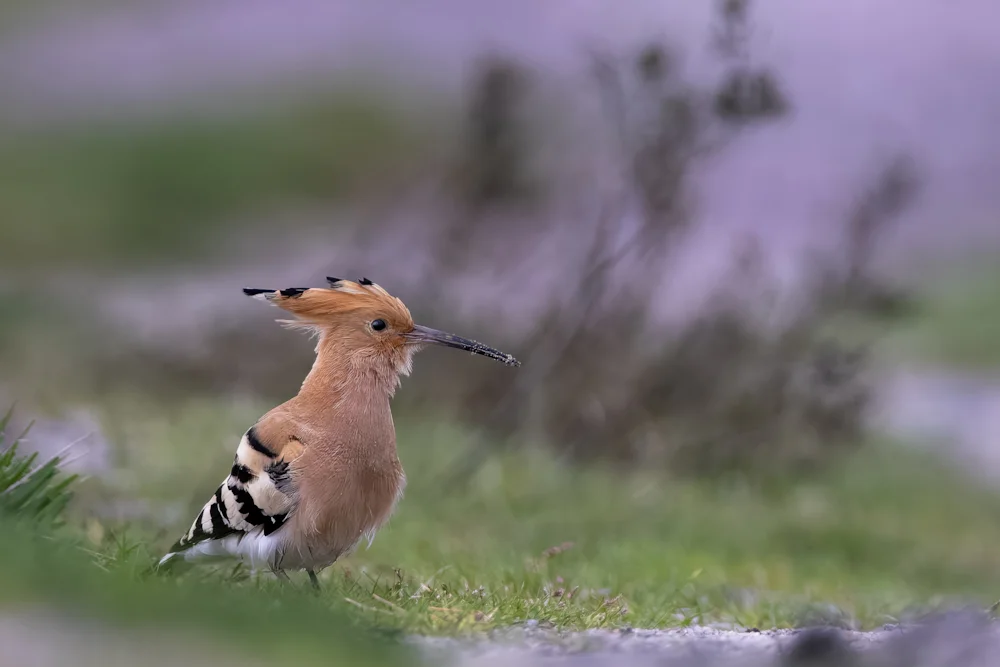
Hoopoe, Frensham Little Pond, Surrey (Stu8fish).
On 14th, the White-spotted Bluethroat at Slimbridge WWT, Gloucestershire, for its third year. Female Bluethroats were on the Isle of May, Fife, and Out Skerries, Shetland. Shetland enjoyed a good spread of Grey-headed Wagtails, with one more at Boldon Flats, Durham. A female Citrine Wagtail was still on Fair Isle and a Greater Short-toed Lark was on St Mary's, Scilly, with a late Shore Lark on Isle of Noss, Shetland.
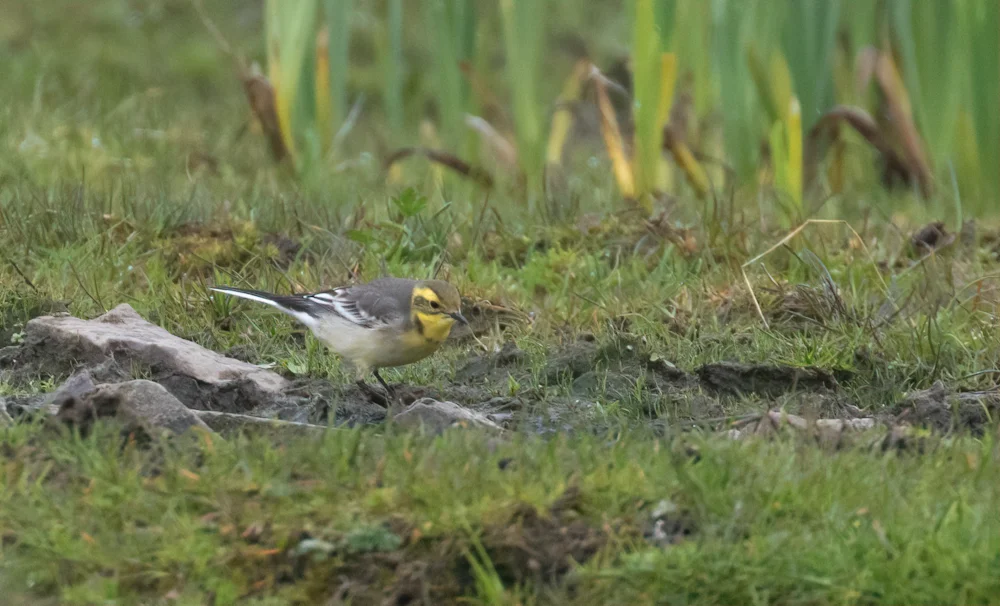
Citrine Wagtail, Fair Isle, Shetland (Georgia Platt).
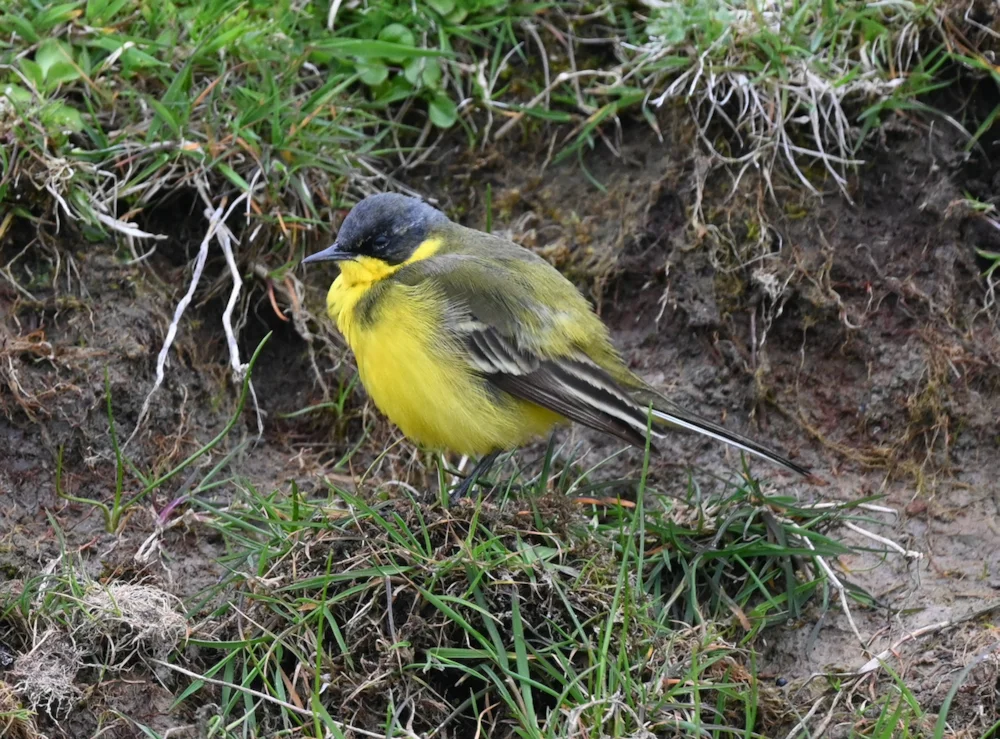
Grey-headed Wagtail, Grutness, Mainland, Shetland (Roger Ridley).
The Pacific Swift was noted again at Ham Wall RSPB, Somerset, on 8th, the same day a brief Alpine Swift was over Long Nanny, Northumberland. Red-rumped Swallows were in East Yorkshire, Caithness and Shetland.
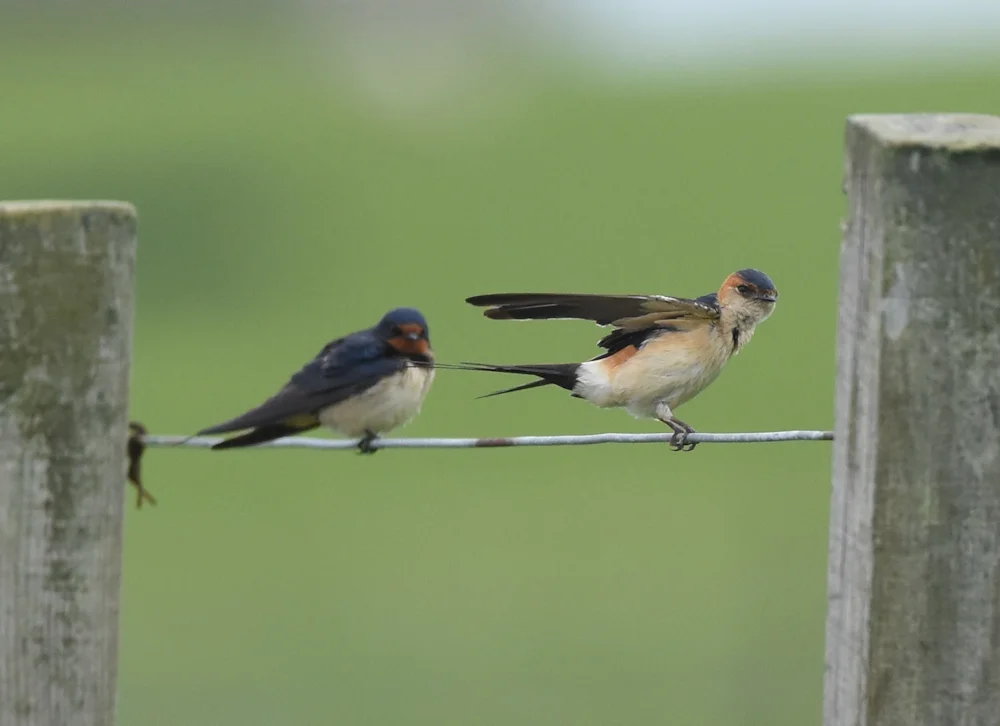
Red-rumped Swallow (right) and Swallow, Pool of Virkie, Mainland, Shetland (Roger Ridley).
It was another excellent week for Pallid Harriers, with birds in five counties. Two ringtail Montagu's Harriers kept close company near Breydon Water, Norfolk, with others still in Cornwall and Co Antrim. A female Pallid or Montagu's Harrier south at Spurn, East Yorkshire, added to the totals. Other notable news concerned a Gyr Falcon at Cove, Highland, on 11th and a probable Short-toed Snake Eagle west over Walkford, Dorset, on 14th. Eight sites enjoyed European Honey Buzzards and Red-footed Falcons were at Stodmarsh NNR, Kent, and Ludham Bridge, Norfolk.
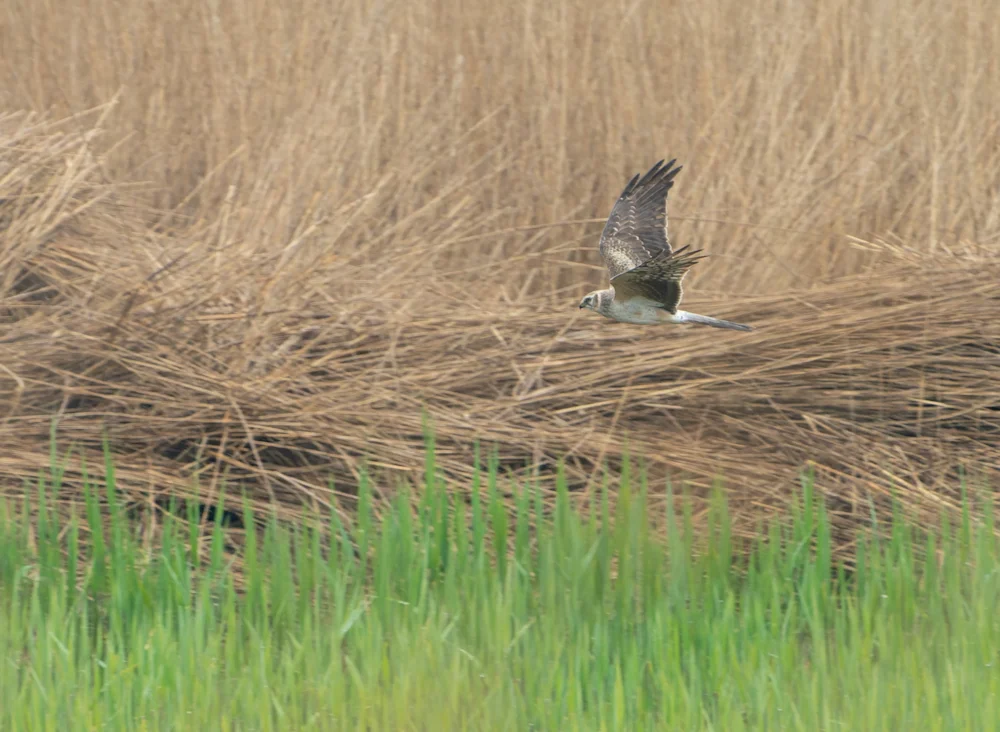
Pallid Harrier, Walberswick NNR, Suffolk (Jake Gearty).
Five days since departing the Northumberland coast, the Grey-headed Lapwing resurfaced at Lossiemouth, Moray, on 13th, to the glee of Scottish birders – but had moved on again by the following morning. It was a decent week for Pectoral Sandpipers, with birds at five sites, including two at Cliffe Pools RSPB, Kent, on 11th. An American Golden Plover graced Cemlyn Bay, Anglesey, from 9-12th and Long-billed Dowitchers lingered in Norfolk and Hampshire. Trips of Eurasian Dotterel were in Norfolk, Lancashire, Ceredigion, Shetland and the Outer Hebrides, and a Eurasian Stone-curlew was still on Fair Isle. A new Black-winged Stilt was at Cahore Marsh, Co Wexford.
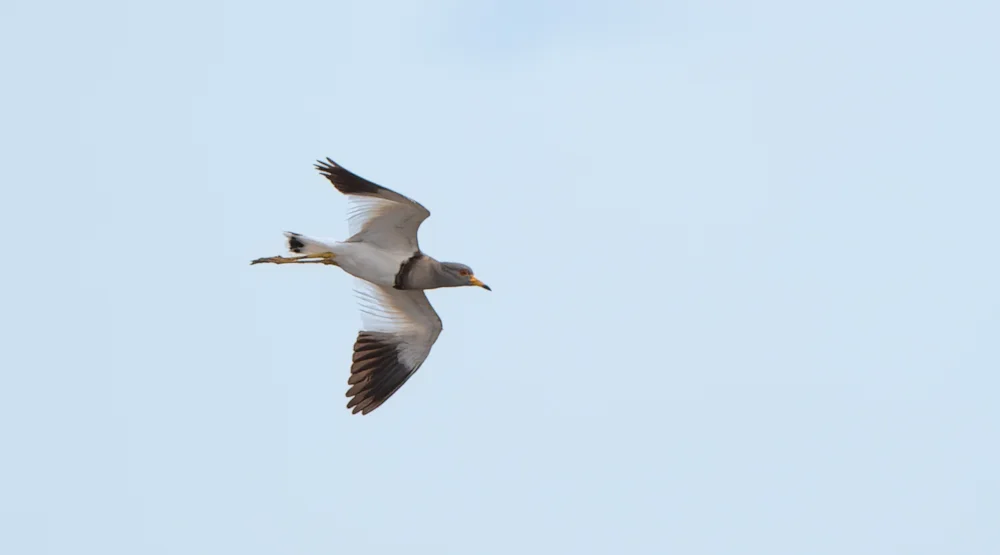
Grey-headed Lapwing, Lossiemouth, Moray (David Main).
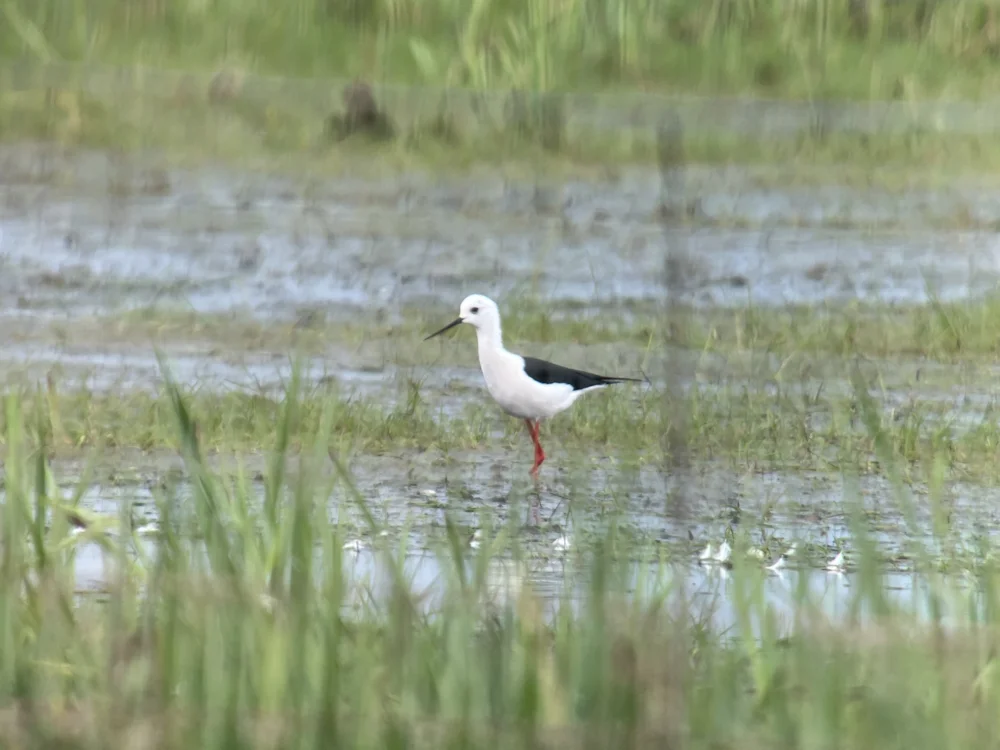
Black-winged Stilt, Cahore Marsh, Wexford (Cian Cardiff).
A Squacco Heron was at Combe Valley CP, East Sussex, on 14th, where a continuing Black-crowned Night Heron played second fiddle. Although the influx has slowed somewhat, 14 Black-crowned Night Herons were at 11 locations, with 11 of those consisting of new arrivals. The latest species to arrive en masse is Glossy Ibis, with some bumper flocks recorded including 17 over Skomer, Pembrokeshire, 16 over Cotswold Water Park, Wiltshire, 13 at Hayling Island, Hampshire, and 12 over Appleford GPs, Oxfordshire. Purple Herons were at 11 sites, with new birds in Cornwall, Dorset, West Sussex, Suffolk and Norfolk. Wandering White Storks were noted as far north as Ruswarp, North Yorkshire.
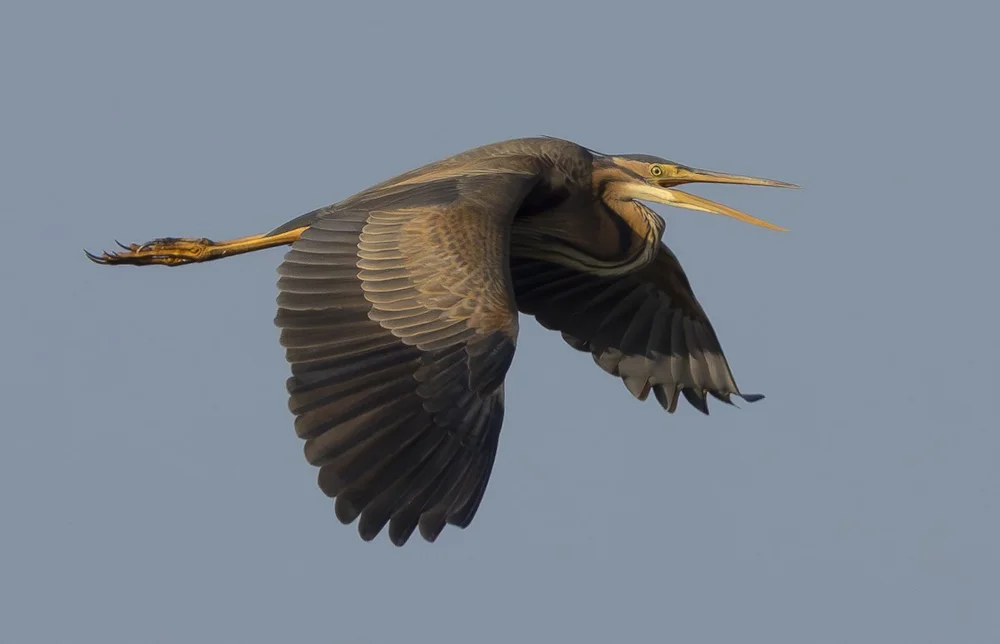
Purple Heron, Lodmoor RSPB, Dorset (Peter Coe).
Spring skua passage is always a highlight in the Outer Hebrides. Although yet to kick off in earnest, 13 Long-tailed Skuas flew past Aird an Runair, North Uist, on 14th, accompanied by 11 Pomarine Skuas. In Shetland, a lone adult Long-tailed was on Fair Isle on 11th and, surprisingly, an adult Sabine's Gull off Norwick, Unst, on 14th is the island's first-ever record.
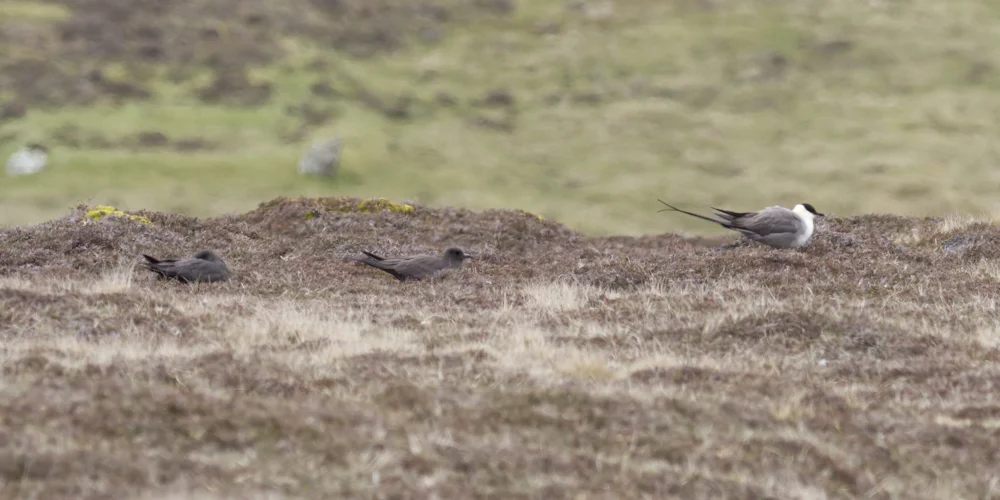
Long-tailed Skua (right), Fair Isle, Shetland (Patrick Safford).
The adult summer Laughing Gull afforded some excellent views in the Lesser Black-backed Gull colony on Gugh, Scilly. Elsewhere, an adult Ring-billed Gull continued its residency at Loch Turret Reservoir, Perth and Kinross, and the second-calendar-year Bonaparte's Gull was still at Hayle Estuary, Cornwall.
Well worth going overseas to Gugh pic.twitter.com/xDk7hE0xUp
— Scilly Pelagics (@Scillypelagics) May 14, 2023
The young Forster's Tern continued to put in ad-hoc appearances around Poole Harbour, Dorset, and a Caspian Tern was off Burry Port, Carmarthen, on 11th.
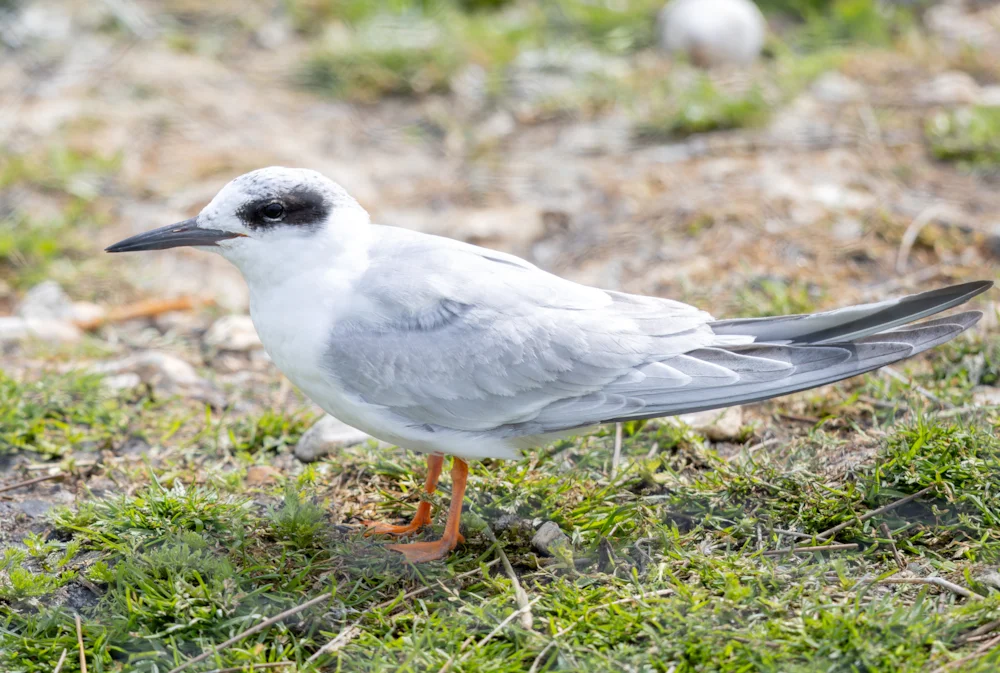
Forster's Tern, Brownsea Island NT, Dorset (Lee Fuller).
Action off Lower Largo, Fife, remained high, with this week's highlight concerning the relocation of the Pacific Diver last seen off Leven back in February. The Stejneger's and two White-winged Scoter also remained, as did at least two Surf Scoter.
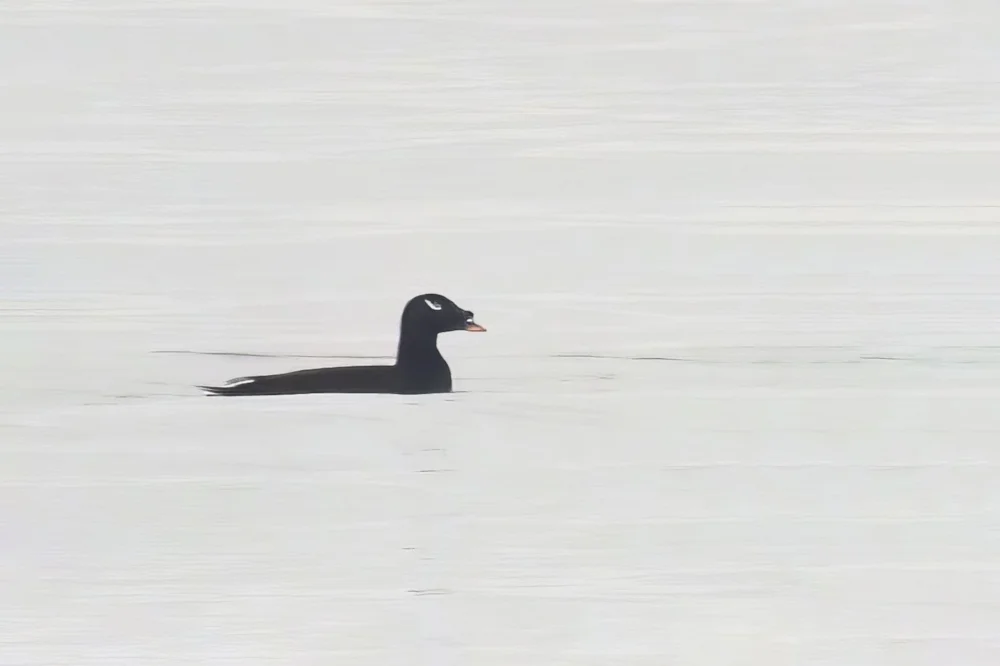
Stejneger's Scoter, Lower Largo, Fife (Michael Ilett).
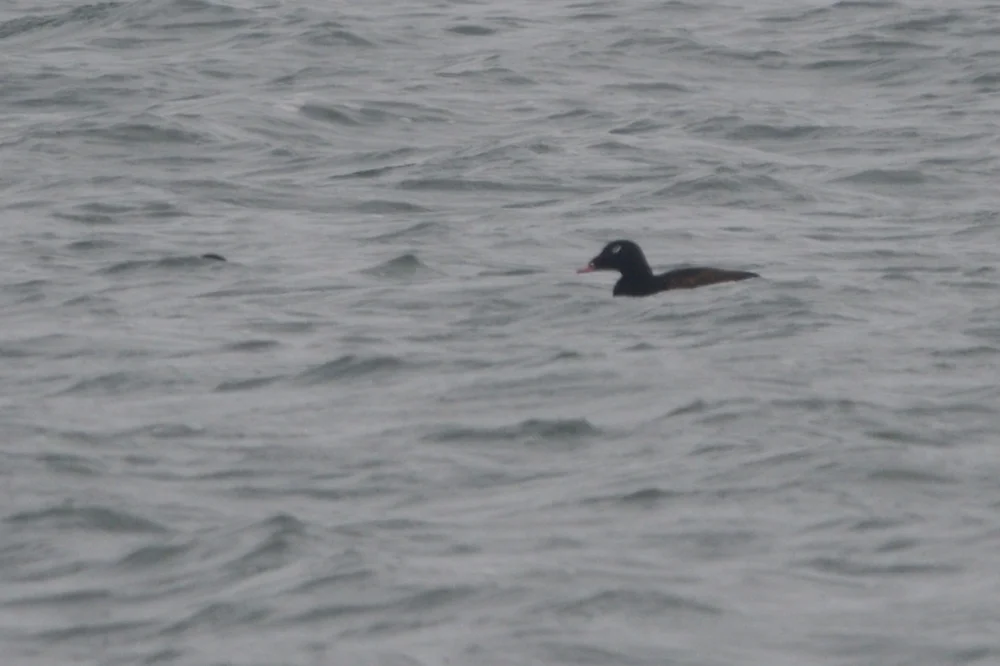
White-winged Scoter, Lower Largo, Fife (Ian Curran).
On 14th, Lesser Scaup were discovered at both Castle Loch, Dumfries and Galloway, and St John's Loch, Caithness. Otherwise, a pair of Ferruginous Duck was still at Filby Broad, Norfolk, and Ring-necked Duck were in Co Mayo (two), Oxfordshire, South Yorkshire and Fife, while the drake Hooded Merganser continued at Whinfell Tarn, Cumbria, throughout.
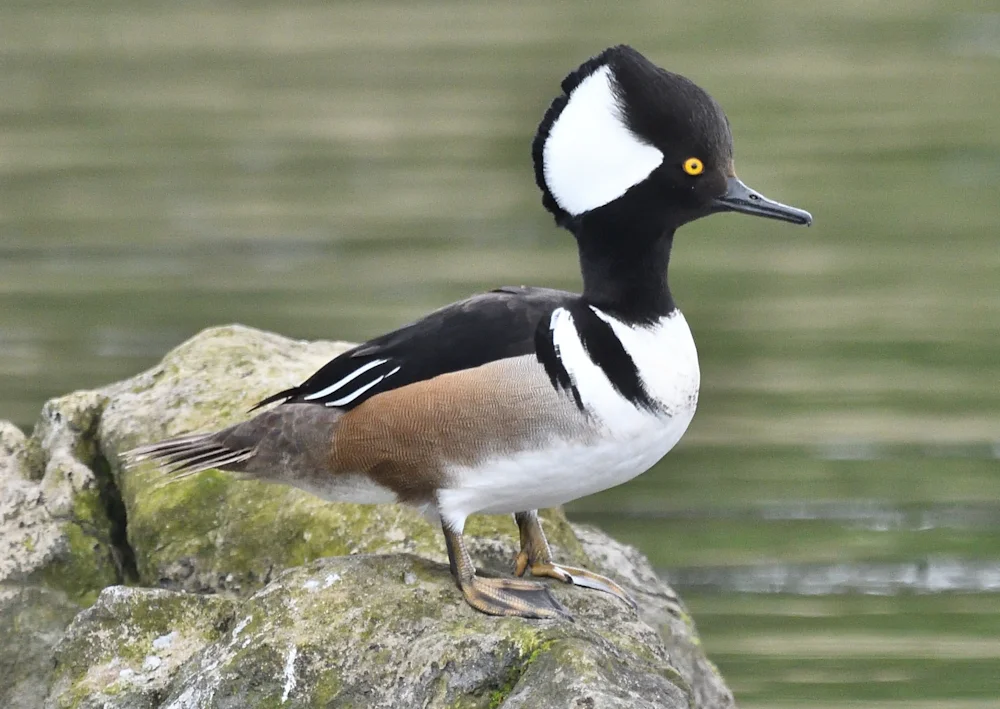
Hooded Merganser, Whinfell Tarn, Cumbria (Robert Mcveigh).
Both an American Wigeon and a Green-winged Teal were at Guardbridge, Fife, with another of the latter on Islay, Argyll. Lincolnshire's Blue-winged Teal relocated to Freiston Shore RSPB from 11th and the resident American Black Duck was still in Co Mayo. In Aberdeenshire, the usual King Eider was still at Ythan Estuary and a number of White-billed Divers were off the Northern Isles and Hebrides. A Taiga Bean Goose was still near Longhaven, Aberdeenshire, on 9th.
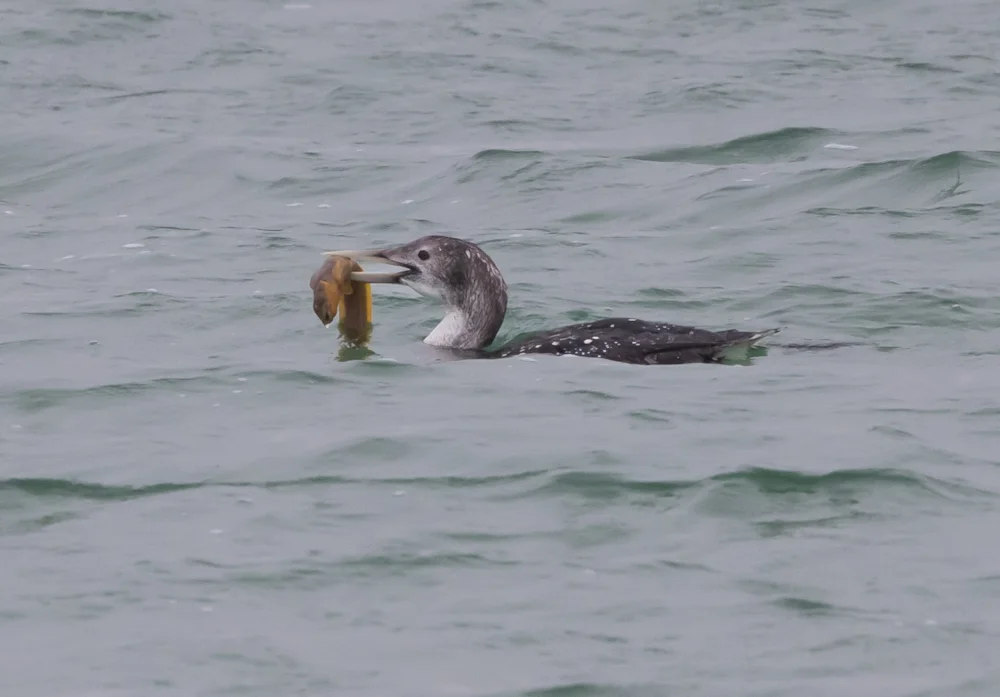
White-billed Diver, Westray, Orkney (Andrew Hall).
Keep up to date with by-the-minute sightings updates of rarities, spring migrants and birds in your local area at www.birdguides.com/sightings or via the BirdGuides app. New users are entitled to a one-month free trial.
Western Palearctic
Finnish birders enjoyed an excellent week: the nation's third Baikal Teal at Ähtäri was complemented by a Caspian Stonechat at Pasalankylä and a Sociable Lapwing at Rannankylä. A young male Lesser Kestrel flew over Bulbjerg, Denmark, on 10th. A White-tailed Lapwing made it to Varberg, Sweden, before moving to Slevdalsvannet, Norway – where it became just the second national record. Two more were at Karcag, Hungary.
The influx of Mediterranean visitors continued to reach Iceland, with a Gull-billed Tern at Eyrarbakki and a Black-winged Stilt at Álfsnes – just a couple of weeks after the nation's second. An adult drake White-winged Scoter continued at Reykjavík, with another White-winged at Svenska Högarna, Sweden.
A Greater Sand Plover – Poland's eighth – was at Hel and a first-summer Slender-billed Gull lingered in Germany at Gremsdorf. A Pacific Golden Plover and Maghreb Little Owl were on Sicily, Italy. A Dark-eyed Junco at Hippolytushoef, The Netherlands, was a one-day visitor, with a Calandra Lark at Oostvaardersplassen and the Falcated Duck still at Nieuwe Driemanspolder.
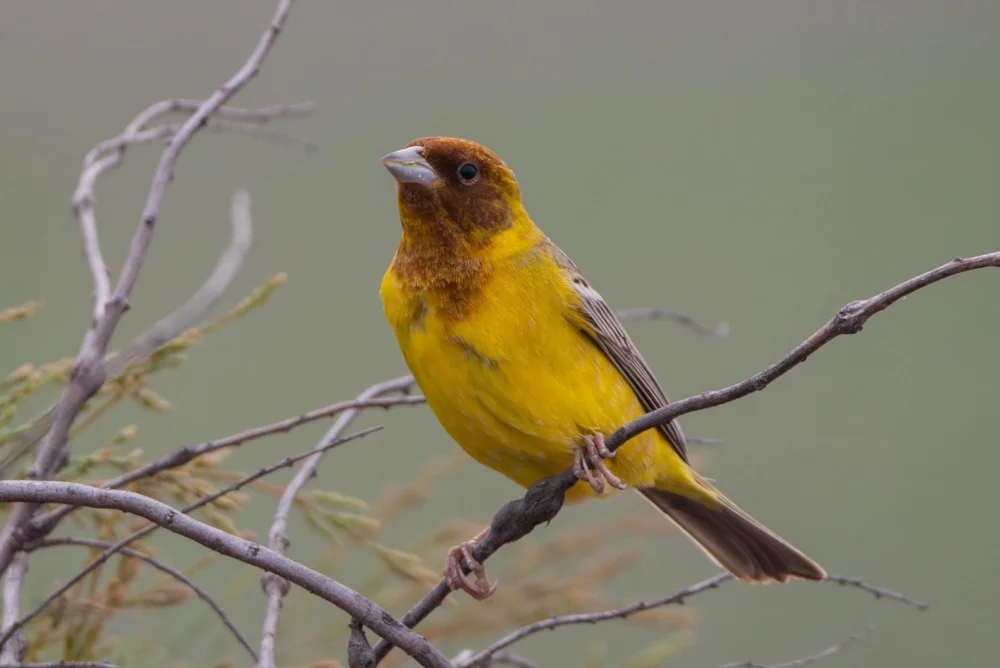
Red-headed Bunting, Absheron NP, Absheron (Elvin Məmmədsoy).
In France, a Black-winged Pratincole was at Le Cailar and a male Trumpeter Finch was still at Saintes-Maries-de-la-Mer. The Bridled Tern returned for a second summer at Île aux Moutons, while both an Elegant Tern and American Herring Gull remained. Another Elegant Tern was still at Santa Pola, Spain
At least four Crested Honey Buzzards flew north over Al Galala, Egypt, on 12th. Syria recorded its first Arabian Green Bee-eater, though it unfortunately made its way into a hunter's bag. In Morocco, the Hooded Vulture lingered with up to three Rüppell's Vultures at Jbel Mousa until 10th at least.
In the far east of the region, a stunning male Red-headed Bunting accompanied a flock of Black-headed Buntings at Absheron NP, Azerbaijan, on 14th – becoming just the country's second record.


